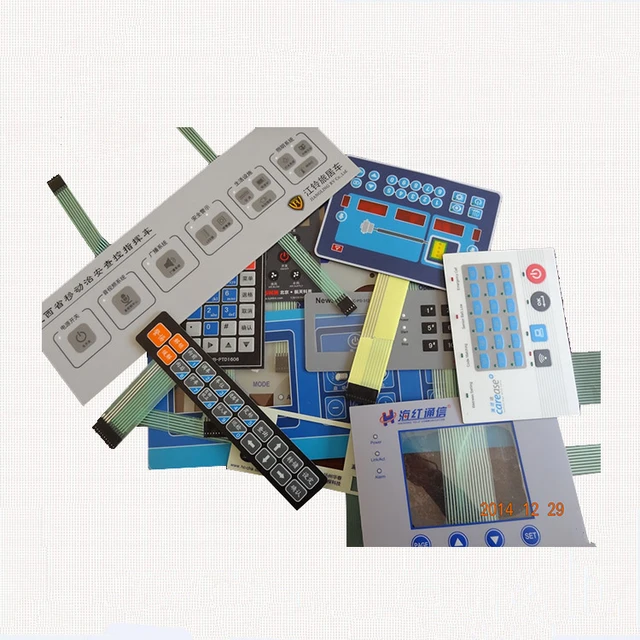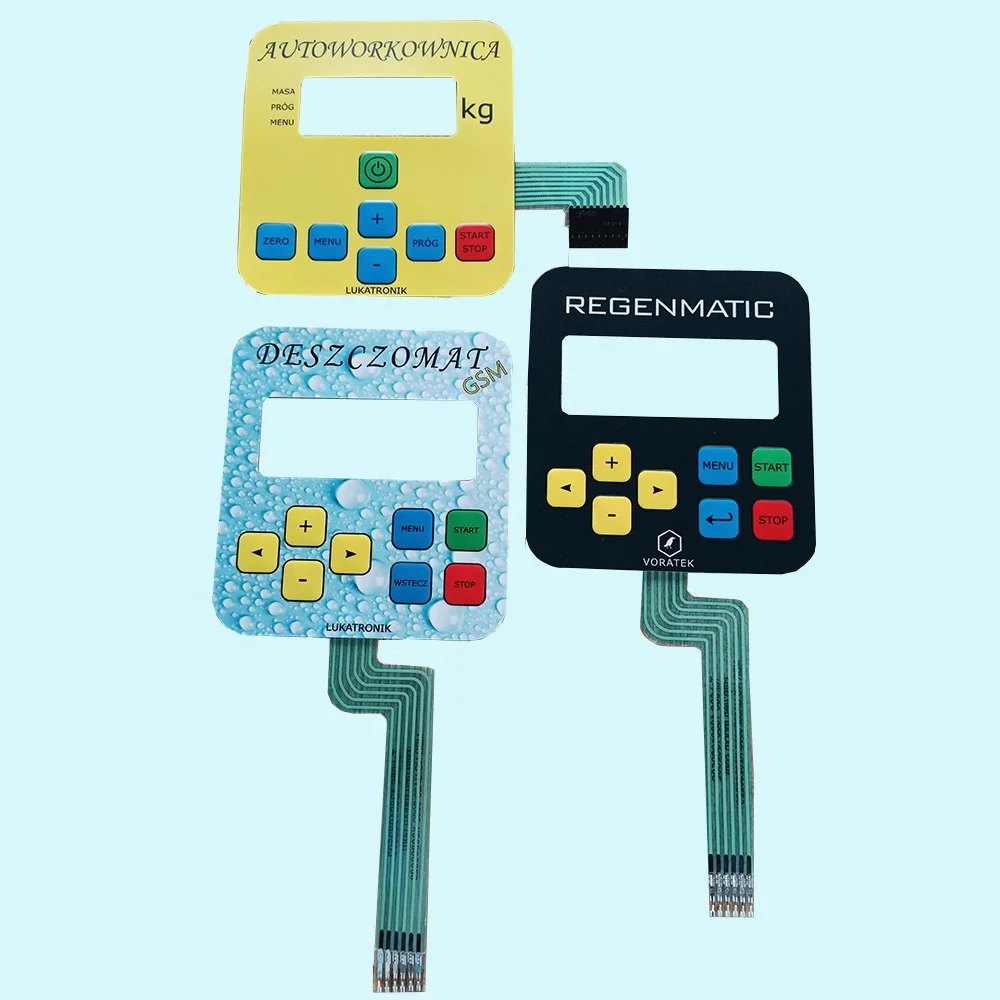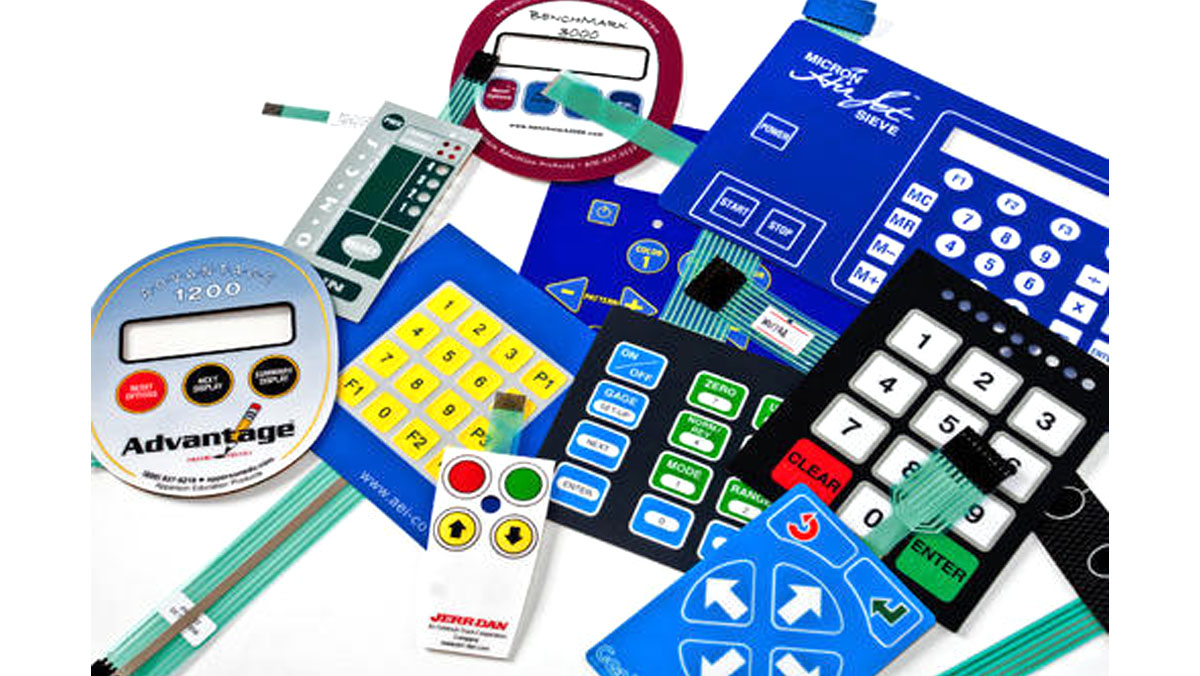How Membrane Switch Technology is Revolutionizing User Interfaces
How Membrane Switch Technology is Revolutionizing User Interfaces
Blog Article
Understanding Membrane Switches Over: The Secret to Durable and Trusted Controls

What Are Membrane Buttons?
Membrane layer switches are an advanced option in the world of user interface technology, integrating performance and layout seamlessly. These devices serve as an interface between individuals and digital systems, incorporating a number of parts right into a portable layout. Generally constructed from versatile, thin layers of materials, membrane switches are developed to respond to touch, allowing users to communicate with machinery and electronic devices effectively.
The primary elements of a membrane button consist of a published circuit layer, visuals overlay, and a spacer layer that stops unexpected activation. The visuals overlay can be tailored to show brand identity or user preferences, boosting aesthetic appeals while guaranteeing use. Membrane layer switches are typically utilized in various applications, consisting of medical devices, consumer electronic devices, and commercial equipment, owing to their resilience and resistance to environmental variables such as dampness and dust.
One of the vital benefits of membrane buttons is their capability to endure wear and tear, making them excellent for high-traffic atmospheres. Additionally, they are light-weight and need minimal room, enabling for innovative layouts in product development. On the whole, membrane switches over represent a practical and reliable option for modern digital interfaces, weding technology with user-centric layout principles.
Just How Membrane Switches Over Job
The procedure of membrane layer changes depend upon a basic yet efficient mechanism that converts user input right into digital signals. These switches include multiple layers, commonly including a visuals overlay, a spacer layer, and a circuit layer. When a user presses the switch, the leading layer deforms, enabling a conductive component in the circuit layer to make contact with a matching conductive pad on the bottom of the graphic overlay. This get in touch with shuts the circuit and sends a digital signal to the tool, indicating that the switch has actually been activated.
The design of membrane buttons can differ, yet they often integrate domes or responsive aspects to give feedback to the user, improving the general experience - membrane switch. The products utilized in membrane layer buttons, such as polyester or polycarbonate, add to their resilience and resistance to environmental elements, including wetness and dust. The published circuits are commonly enveloped, which protects them from wear and tear over time.
Benefits of Membrane Layer Buttons

Furthermore, membrane switches are understood for their durability. Constructed from robust materials, they are resistant to dust, wetness, and physical wear, which dramatically expands their lifespan contrasted to traditional mechanical switches. This durability makes them specifically ideal for high-traffic settings and applications calling for long life.
An additional substantial advantage is the convenience of cleansing and upkeep. The smooth surface area of membrane layer changes reduces dust build-up and is typically unsusceptible spills, making them suitable for settings that need frequent sanitization.
Furthermore, membrane buttons supply a structured profile, bring about a thinner design that can be integrated into numerous tools without including bulk. This feature not just improves the aesthetic appeal yet likewise contributes to a more ergonomic item style.
Applications of Membrane Buttons
Functional and easy to use, membrane layer switches locate applications throughout a vast array of sectors, consisting of medical tools, consumer electronics, and commercial devices. In the medical field, these buttons are important to devices such as analysis devices, patient surveillance systems, and mixture pumps, where dependability and ease of cleansing are vital. Their ability to hold up against severe settings and preserve functionality makes them suitable for such applications.

In customer electronics, membrane layer buttons are used in items like microwaves, cleaning devices, and remote controls - membrane switch. Their streamlined design enables for instinctive user interfaces, improving the total customer experience while supplying resilience and resistance to damage
Industrial devices additionally gains from membrane switches, particularly in control visit our website panels for machinery and automation systems. These switches use defense versus dust and moisture, making sure regular efficiency in challenging environments. Moreover, their personalized attributes permit manufacturers to tailor them to particular operational requirements, improving performance and capability.
Selecting the Right Membrane Layer Switch Over
When selecting a membrane layer button, it is vital to consider numerous variables that affect efficiency and suitability for particular applications. The primary factors to consider consist of ecological conditions, tactile feedback, durability, and layout requirements.
First, examine the operating atmosphere; switches revealed to dampness, chemicals, or extreme temperatures call for details materials to guarantee longevity and capability. Next, assess the demand for responsive comments. Depending on customer interaction, some applications may take advantage of official statement a tactile response to validate activation, while others may favor a non-tactile style for aesthetic factors.
Toughness is another critical aspect; membrane buttons ought to be designed to stand up to frequent usage, impacts, and abrasion. Make certain the chosen button can withstand the anticipated lifecycle, especially in high-usage circumstances.

Verdict
In final thought, membrane layer switches serve as crucial components in the style of sturdy and reputable control systems throughout numerous industries. The flexibility of membrane layer switches over allows for tailored options that fulfill particular operational needs, strengthening their value in modern technology.
Membrane changes represent an essential facet of modern interface design, blending performance with durability in different applications.Membrane layer buttons are an innovative remedy in the world of customer interface technology, combining functionality and design seamlessly. Generally built from versatile, thin layers of materials, membrane switches are designed to react to touch, making it possible for customers to connect with equipment and digital gadgets successfully.
The style of membrane switches can differ, yet they usually include domes or responsive aspects to offer feedback to the user, enhancing the total experience.In verdict, membrane layer switches serve as essential parts in the style of dependable i thought about this and resilient control systems throughout numerous markets.
Report this page